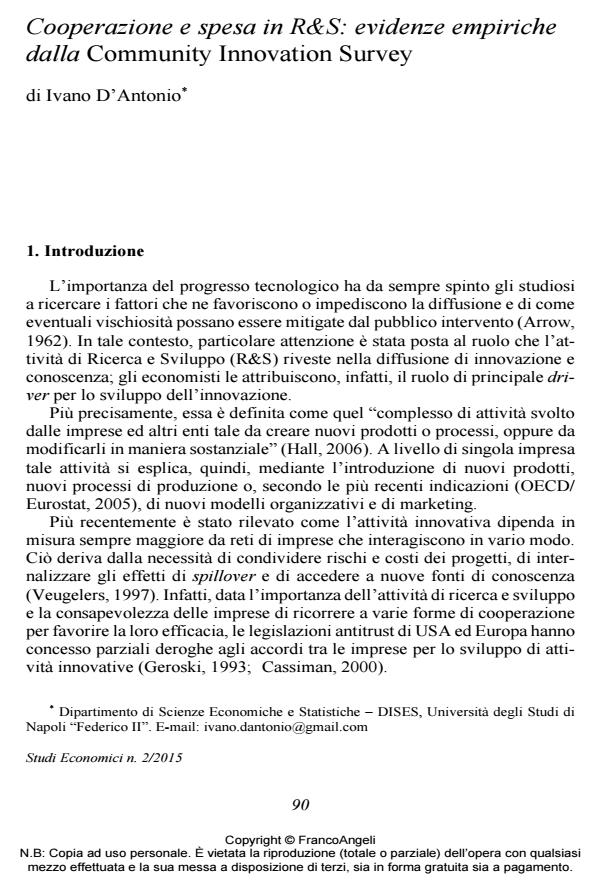Cooperazione e spesa in R&S: evidenze empiriche dalla Community Innovation Survey
Titolo Rivista STUDI ECONOMICI
Autori/Curatori Ivano D'Antonio
Anno di pubblicazione 2016 Fascicolo 2015/116
Lingua Italiano Numero pagine 21 P. 90-110 Dimensione file 298 KB
DOI 10.3280/STE2015-116004
Il DOI è il codice a barre della proprietà intellettuale: per saperne di più
clicca qui
Qui sotto puoi vedere in anteprima la prima pagina di questo articolo.
Se questo articolo ti interessa, lo puoi acquistare (e scaricare in formato pdf) seguendo le facili indicazioni per acquistare il download credit. Acquista Download Credits per scaricare questo Articolo in formato PDF

FrancoAngeli è membro della Publishers International Linking Association, Inc (PILA)associazione indipendente e non profit per facilitare (attraverso i servizi tecnologici implementati da CrossRef.org) l’accesso degli studiosi ai contenuti digitali nelle pubblicazioni professionali e scientifiche
R&D activities are carried out through the introduction of new products, new processes or, according to the latest indications (OECD / Eurostat, 2005), through new organizational and marketing levels. These activities increasingly depends by the firm’s ability in interacting with other subjects (firms, research centers), so that they can share risks and costs of the projects, internalize spillover effects, access to new sources of knowledge (Veugelers, 1997). However, there is not unanimous consent whether these interaction’ forms determine an increase of firms’R&D costs. The object of the paper is to verify if cooperation agreements influence firms’ expenses in innovative activities, and if there are complementary or substitution effects. Using data from the Community Innovation Survey (CIS) of 2008 referred to Italy, a double hurdle model is estimated and a positive and statistically significant effect of cooperation on R&D investment is found.
Parole chiave:R&D investment, R&D cooperation, Italian Innovation Survey, Double hurdle model.
Jel codes:O32; O33; L20.
Ivano D'Antonio, Cooperazione e spesa in R&S: evidenze empiriche dalla Community Innovation Survey in "STUDI ECONOMICI " 116/2015, pp 90-110, DOI: 10.3280/STE2015-116004